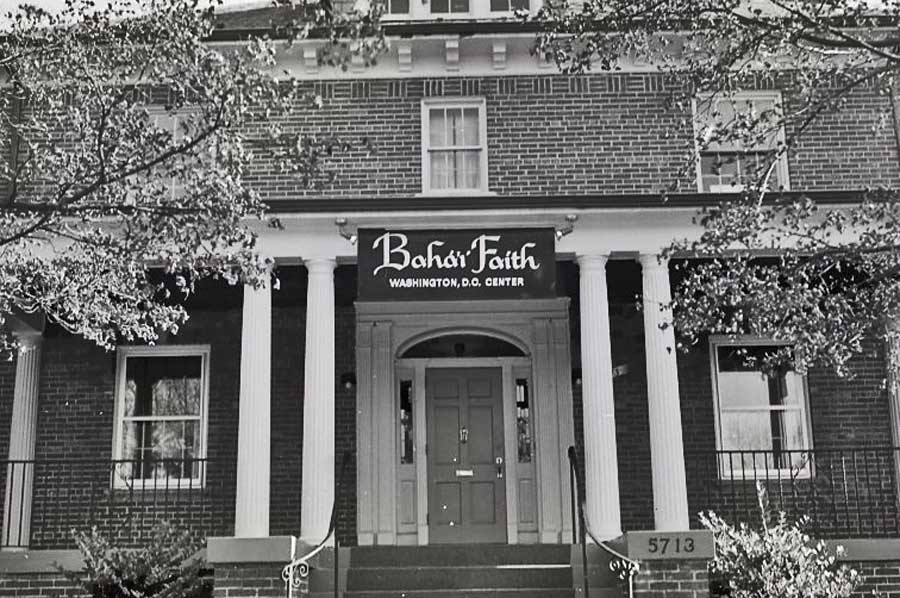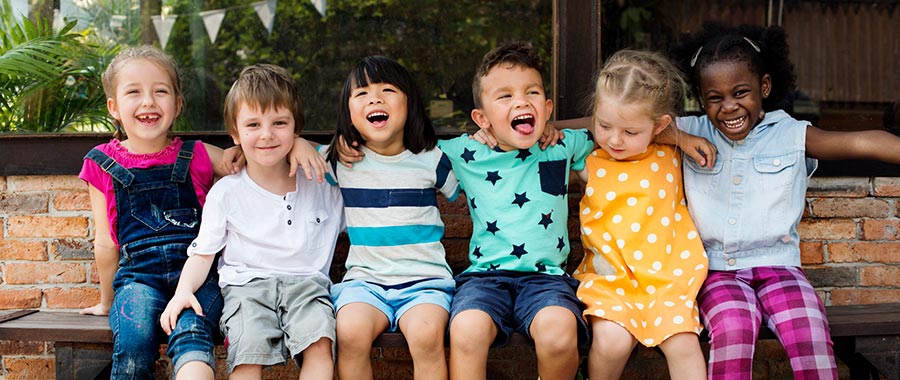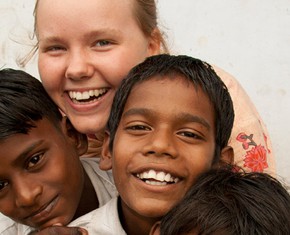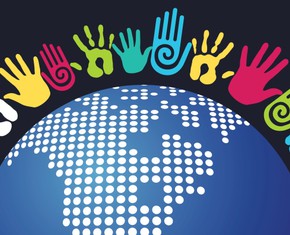The views expressed in our content reflect individual perspectives and do not represent the authoritative views of the Baha'i Faith.
Baha’is love to sing! The Baha’i teachings say that “We verily have made music as a ladder for your souls.”
But sometimes, I don’t know the lyrics to Baha’i songs well, if at all. At Baha’i gatherings, the group sings, and I fade – “We are drops of one ocean, we are waves of one sea” …. mumble mumble hum mmmm pft… – and then smile until it’s done, relieved that the bit of unintended awkwardness is over. Inwardly, I rejoice when someone provides a copy of the lyrics beforehand, or at least writes them in large letters on a flip board.
It’s not that I have anything against Baha’i music–all the contrary. Colombian powerhouse group Leonor Dely and Millero Congo and New Zealander chronicler and strummer Grant Hindin Miller are among my favorites in any genre.
But I wasn’t raised with such songs, or in a Baha’i community for that matter, where kids often learn them by heart in children’s classes. Fortunately, through my child’s weekly experiences at the Radiant Heart Baha’i School at the Washington DC Baha’i Center, I fill those gaps, and try to learn more.

The Washington D.C. Baha’i Center.
Indeed, to me, the key lesson these classes offer grown-ups is to make the effort for your kids, allowing them to take part in Baha’i children’s classes for the benefit of their souls—and yours. Let me explain.
About Baha’i Children’s Classes
Just about anywhere you go in the world, you can find Baha’i children’s classes for young people of all backgrounds. While they are as varied as their global cultural contexts, they all focus on developing the spiritual virtues in a child’s character, and teaching the fundamental principles of the Baha’i Faith. Everyone is welcome—not just Baha’is, but kids and adults from any religious tradition or none at all.
Just Getting There
Like many families who attend Baha’i children’s classes, for us, just getting there can get interesting. Most Sunday mornings, we cross the Potomac River into the District of Columbia from Virginia and grapple with whatever the nation’s capital throws at us: temporary road blockages for major running races and seemingly eternal detours on what would usually be the simplest route to the Baha’i Center. Sometimes, we even encounter a VIP motorcade, replete with piercing police sirens. If they are black SUVs with “government” plates, it’s likely an administration official. If, however, the cars are normal-sized, it’s probably a high-level foreign dignitary. Inevitably, the intersection at the National Zoo clogs with sightseers. Other times, though, the transportation nuisances are less daunting, even uplifting, as the streets fill with Sunday morning bikers, joggers, and walkers.
Classes in the U.S. Capital
The Sunday morning Baha’i children’s classes in Washington, DC are eclectic, both in terms of students and teaching methods. They are divided into groups of six and under, seven to ten, and ten and up (junior youth). Music and art are common features of the lessons.
Because I’ve only been at this Baha’i thing since I was 27, I learn things from my child’s lessons which I hadn’t realized before—or grasp them in new, clearer, and more illuminating ways. For example, I was struck to see Baha’u’llah’s lineage from Moses and Zoroaster clearly explained in a genealogical chart my child made.
The children also make their own crafts books representing Baha’u’llah’s Hidden Words and The Book of Certitude, copying within them quotes like:
O Son of Spirit! My first counsel is this: Possess a pure, kindly and radiant heart, that thine may be a sovereignty ancient, imperishable and everlasting. – Baha’u’llah, The Hidden Words, p. 3.
God is the Light of the Heavens and the Earth. – Qur’an 24:35, quoted by Baha’u’llah, The Book of Certitude, p. 90.
Baha’i children’s class materials clearly show the trajectory of the Faith’s history, starting with the earliest days of the revelation of the Bab, Baha’u’llah’s herald and forerunner. Because of the recent celebration of the Bicentenary of Baha’u’llah’s birth on October 22nd, the current course materials cover the Bab’s mention of Baha’u’llah, his early life and imprisonment in Tehran’s Black Pit, his time as a homeless dervish in Iraq, key events in Baha’u’llah’s exiles to Constantinople and Adrianople, and the periods as a prisoner in Akka and Bahji. Word searches, YouTube videos, and fill-in-the blank puzzles supplement the curriculum.
Yet the weekly lesson is only part of the children’s’ experience. During the classes, adults (and little ones too young for the children’s classes) gather downstairs to hear the week’s talk or, the third Sunday of every month, attend a gripping, evocative gathering that features chanted prayers and songs accompanied and driven by drumming. A few minutes before the Sunday gatherings end, everyone hears the pitter-patter of kids’ steps and their high-pitched banter as they bound downstairs. The children often quietly enter the main room from the back at the close of the adult session, proudly displaying their artwork and lessons from the day.
Socialization follows. When the weather’s nice, a group of kids dart outside to a copse of trees, where they construct “fairy houses,” lean-tos made from sticks, leaves, branches, and whatever miscellany they discover in the yard. In the winter months, the kids drift off to different floors and corners of the Baha’i Center, socializing and playing good-natured pranks on older kids (not to mention sneaking away with cookies!).
Takeaways for Grown Ups
These classes have taught me several lessons. First, keep an open mind. These kids are receiving solid, concise lessons on Baha’i teachings and history–elements which can inform our own knowledge, especially at present, with all the focus on the life of Baha’u’llah and the Bicentenary. So, for example, if you need a quick brush up on Baha’u’llah’s station according to various prophecies, your kids’ class materials can serve you well. The award-winning Brilliant Star Baha’i children’s magazine is another resource for this purpose.
Second, these classes ensure kids have friends outside of normal school groups who also have dynamic spiritual lives. That fulfills a crucial need for kids—that they know and relate to other kids out there who also have a spiritual perspective and outlook. Kids rely on friends, peers and contemporaries to establish their own identities, and those relationships, along with their early childhood spiritual training, will stay with them for a lifetime.
Third, if you make the effort for your offspring, whatever the challenges—traffic, time crunches, or otherwise—you’ll find that kids are enthralled with the experience. Children have souls, and their souls are hungry for the spiritual food a Baha’i children’s class can serve them.
Finally, when your Baha’i group sings, please have the lyrics available for everyone.
















Comments
Sign in or create an account
Continue with Googleor